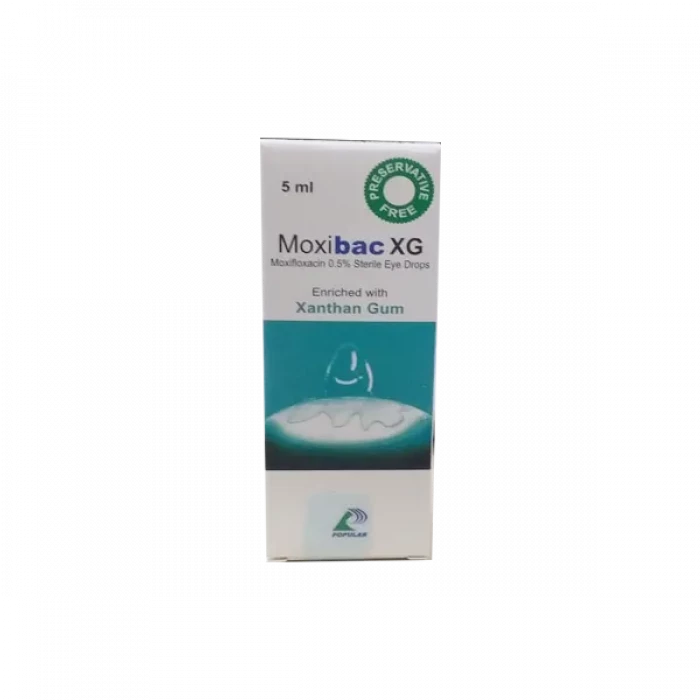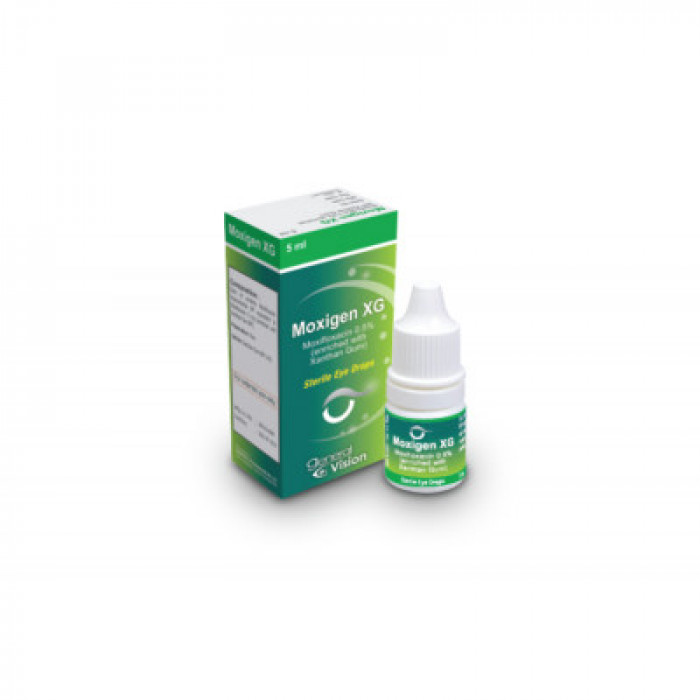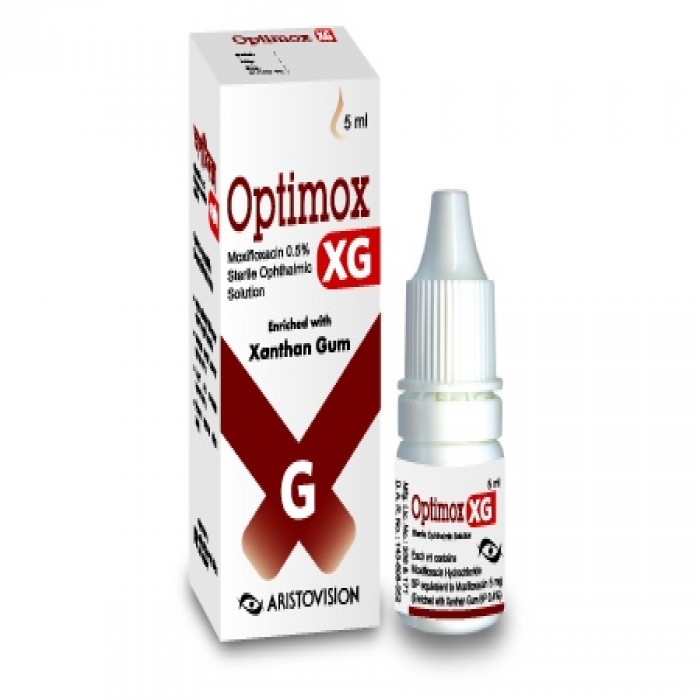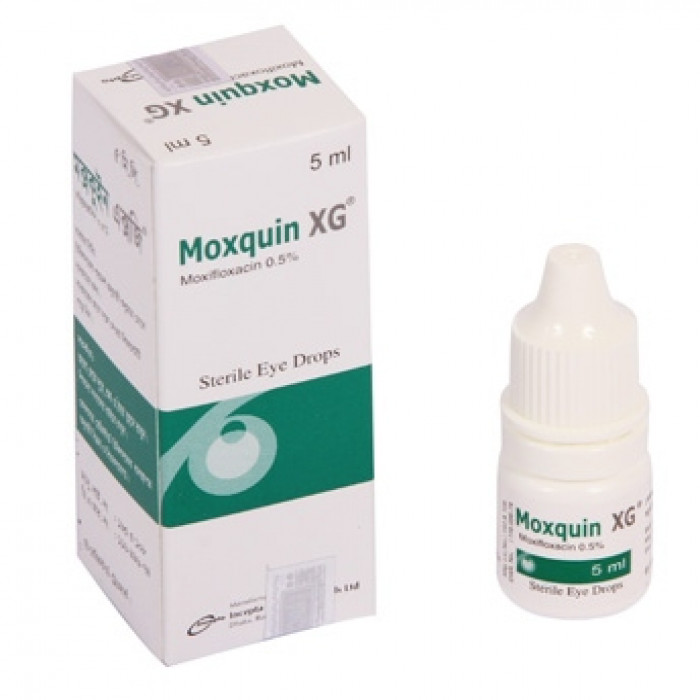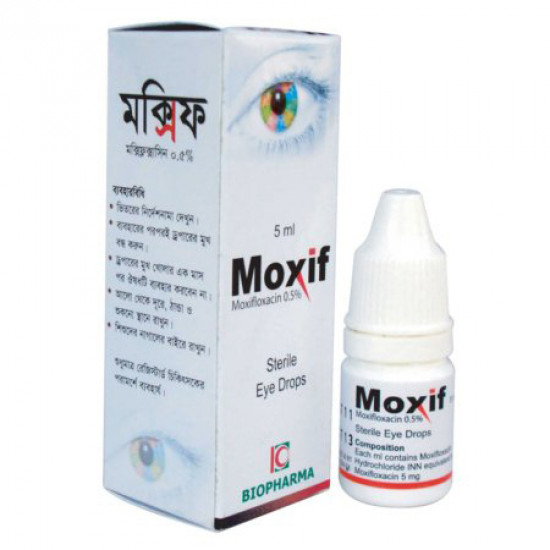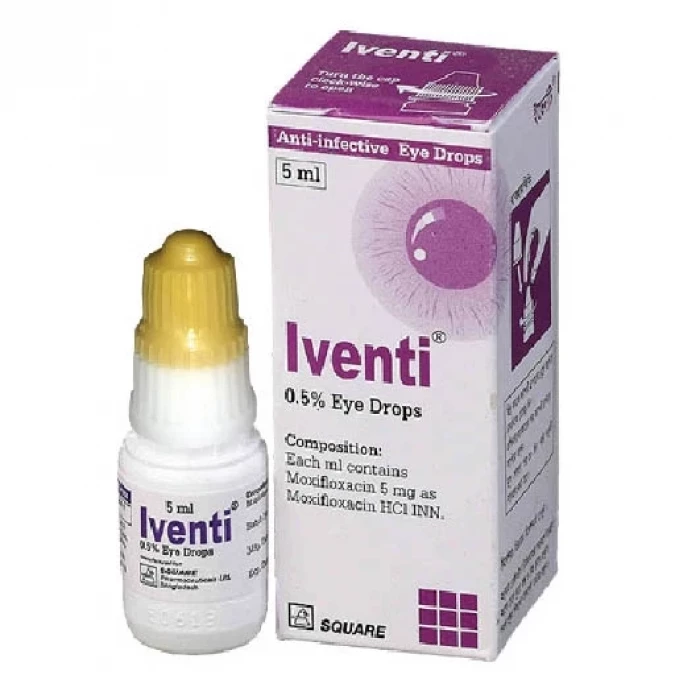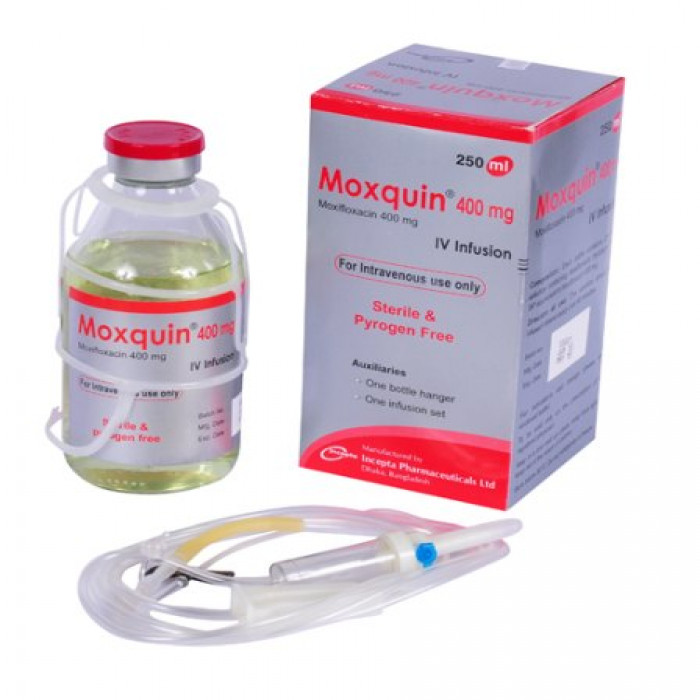
✔ 100% Authentic Product
👁️ Currently Viewing 2299
Moxquin - IV 400mg Infusion
Generic Name: Moxifloxacin Hydrochloride 400/250mg/ml
Manufacturer: Incepta Pharmaceuticals Ltd.
Discount
Price: ৳ 329
MRP:
৳
350
6%
Off

100% Genuine Products, Guaranteed

Safe & Secure Payments, Always

Fast, Secure & Efficient Delivery

Proper Packaging
 Cash on Delivery - All over Bangladesh
Cash on Delivery - All over Bangladesh Regular Delivery - 12-24 Hours, Dhaka City* Charge Tk.39-59
Regular Delivery - 12-24 Hours, Dhaka City* Charge Tk.39-59 Regular Delivery - 24-48 Hours, Other Cities* Charge Tk.99-110
Regular Delivery - 24-48 Hours, Other Cities* Charge Tk.99-110
 ফ্রি ডেলিভারিঃ - ৯৯৯ টাকা+ অর্ডারে, ঢাকা
শহরে
ফ্রি ডেলিভারিঃ - ৯৯৯ টাকা+ অর্ডারে, ঢাকা
শহরে ফ্রি ডেলিভারিঃ - ২৯৯৯ টাকা+ অর্ডারে, ঢাকার
বাহিরে
ফ্রি ডেলিভারিঃ - ২৯৯৯ টাকা+ অর্ডারে, ঢাকার
বাহিরে
100% Genuine Products, Guaranteed
Safe & Secure Payments, Always
Fast, Secure & Efficient Delivery
Proper Packaging
 Cash on Delivery - All over Bangladesh
Cash on Delivery - All over Bangladesh Regular Delivery - 12-24 Hours, Dhaka City* Charge Tk.39-59
Regular Delivery - 12-24 Hours, Dhaka City* Charge Tk.39-59 Regular Delivery - 24-48 Hours, Other Cities* Charge Tk.99-110
Regular Delivery - 24-48 Hours, Other Cities* Charge Tk.99-110 ফ্রি ডেলিভারিঃ - ৯৯৯ টাকা+ অর্ডারে, ঢাকা
শহরে
ফ্রি ডেলিভারিঃ - ৯৯৯ টাকা+ অর্ডারে, ঢাকা
শহরে ফ্রি ডেলিভারিঃ - ২৯৯৯ টাকা+ অর্ডারে, ঢাকার
বাহিরে
ফ্রি ডেলিভারিঃ - ২৯৯৯ টাকা+ অর্ডারে, ঢাকার
বাহিরে
✅ Description:
Indications
Moxifloxacin infusion is indicated for treating following infections in adults >18 years of age caused by designated, susceptible bacteria.
Acute Bacterial Sinusitis
Acute Bacterial Exacerbation of Chronic Bronchitis
Community Acquired Pneumonia
Skin and Skin Structure Infections: Uncomplicated and Complicated
Complicated Intra-Abdominal Infections.
Therapeutic Class
4-Quinolone preparations
Dosage
The dose of Moxifloxacin is 400 mg once daily. The duration of therapy depends on the type of infection as described in following:
Acute Bacterial Sinusitis: 400 mg once daily for 10 days.
Acute Bacterial Exacerbation of Chronic Bronchitis: 400 mg once daily for 5 days.
Community Acquired Pneumonia: 400 mg once daily for 7-14 days.
Uncomplicated Skin and Skin Structure Infections: 400 mg once daily for 7 days.
Complicated Skin and Skin Structure Infections: 400 mg once daily for 7-21 days.
Complicated Intra-Abdominal Infections: 400 mg once daily for 5-14 days.
Administration
Moxifloxacin injection should be administered by intravenous infusion over a period of 60 minutes. Avoid bolus or rapid infusion.
Check the bag for minute leaks by squeezing the inner bag firmly. If leaks are found, or if seal is not intact, discard the solution.
Do not use if the solution is cloudy or a precipitate is present.
Do not use flexible bags in series connections.
Close flow control clamp of administration set.
Remove cover from port at bottom of bag.
Insert piercing pin of administration set into port with a twisting motion until the pin is firmly seated.
Suspend bag from hanger.
Squeeze and release drip chamber to establish proper fluid level in chamber during infusion of Moxifloxacin 400 mg intravenous infusion.
Open flow control clamp to expel air from set. Close clamp.
Regulate the rate of administration with flow control clamp.
Interaction
There are no data concerning an interaction of intravenous fluoroquinolones with oral antacids, sucralfate, multivitamins, didanosine, or metal cations. However, no fluoroquinolone should be co-administered with any solution containing multivalent cations, e.g., magnesium, through the same intravenous line. Quinolones, including Moxifloxacin, have been reported to enhance the anticoagulant effects of warfarin or its derivatives in the patient population. Although not observed with Moxifloxacin in predinical and clinical trials, the concomitant administration of a nonsteroidal anti-inflammatory drug with a quinolone may increase the risks of CNS stimulation and convulsions. There is limited information available on the potential for a pharmacodynamic interaction in humans between Moxifloxacin and other drugs that prolong the QTc interval of the electrocardiogram. Sotalol, a Class III antiarrhythmic, has been shown to further increase the QTc interval when combined with high doses of intravenous (IV) Moxifloxacin in dogs. Therefore, Moxifloxacin should be avoided with Class IA and Class III antiarrhythmics.
Contraindications
Moxifloxacin is contraindicated in persons with known hypersensitivity to Moxifloxacin or other quinolone antibacterials .
Side Effects
Treatment with Moxifloxacin (oral, IV or sequential therapy) may cause some side effects. Common (>1%) side effects include headache, nausea, vomiting, diarrhea, constipation, abdominal pain, dyspepsia, dizziness, pyrexia and insomnia etc. Less common (0.1 to <1%) side effects include neutropenia, palpitations, tachycardia, bradycardia, vertigo, tinnitus, dry mouth, gastritis, edema, fatigue, malaise, hyperglycemia, anorexia, hyperlipidemia, hypoglycemia, dehydration, back pain and arthralgia etc.
Pregnancy & Lactation
Pregnancy Category C. Because no adequate or well controlled studies have been conducted in pregnant women, Moxifloxacin should be used during pregnancy only if the potential benefit justifies the potential risk to the fetus. Moxifloxacin is excreted in the breast milk of rats. Moxifloxacin may also be excreted in human milk. Because of the potential for serious adverse reactions in infants who are nursing from mothers taking Moxifloxacin, a decision should be made whether to discontinue nursing or to discontinue the drug, taking into account the importance of the drug to the mother.
Precautions & Warnings
Fluoroquinolones, including Moxifloxacin, are associated with an increased risk of tendinitis and tendon rupture in all ages. The risk of developing fluoroquinolone-associated tendinitis and tendon rupture is further increased in older patients usually over 60 years of age, in patients taking corticosteroid drugs, and in patients with kidney, heart or lung transplants. Fluoroquinolones have neuromuscular blocking activity and may exacerbate muscle weakness in persons with myasthenia gravis. Clostridium difficile-associated diarrhea (CDAD) has been reported with use of nearly all antibacterial agents, including Moxifloxacin, and may range in severity from mild diarrhea to fatal colitis.
Use in Special Populations
Pediatric patients: Safety and effectiveness in pediatric patients and adolescents less than 18 years of age have not been established.
Geriatric patients: These patients are at increased risk for developing severe tendon disorders including tendon rupture when being treated with a fluoroquinolone such as Moxifloxacin. This risk is further increased in patients receiving concomitant corticosteroid therapy.
Storage Conditions
Store below 25°C and protect from light. Avoid extreme heat and freezing. Keep out of reach of children.
⚠️Disclaimer:
At ePharma, we’re committed to providing accurate and accessible health information. However, all content is intended for informational purposes only and should not replace medical advice from a qualified physician. Please consult your healthcare provider for personalized guidance. We aim to support, not substitute, the doctor-patient relationship.




